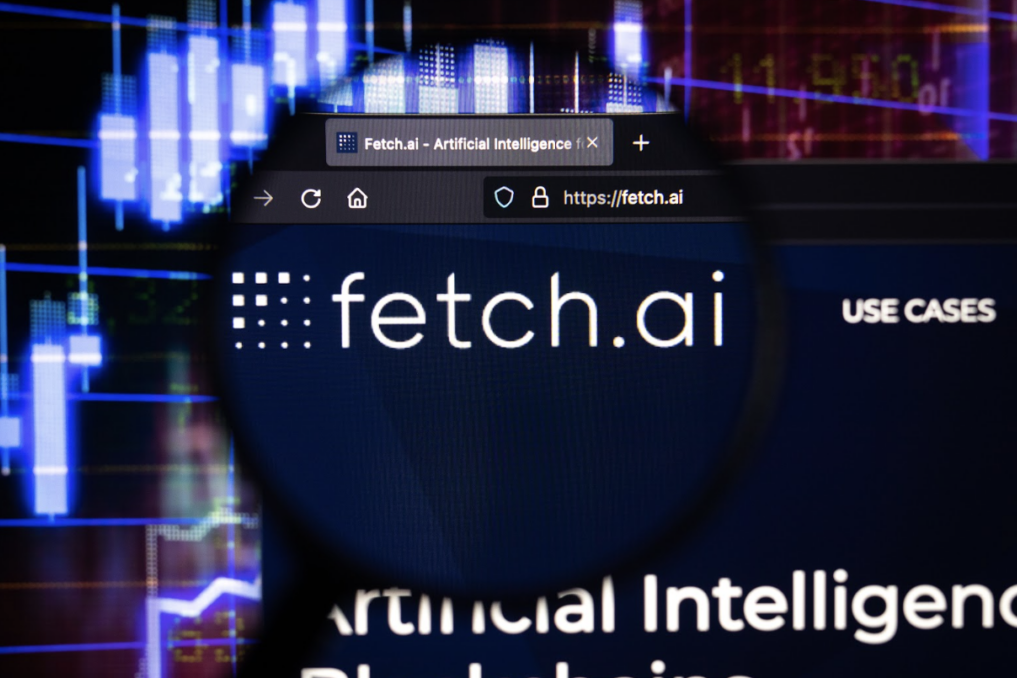The cryptocurrency market is once again abuzz with the AI narrative, as major AI altcoins like FET experiences price pumps this week.
This heightened interest in AI-focused projects has created an opportune environment for new players to make their mark, and InQubeta (QUBE) is doing just that, smashing over $11 million raised in its presale this week, making it one of the most successful crypto presales in 2024.
AI narrative stays strong
ENTER TO WIN $500 IN STOCK OR CRYPTO
Enter your email and you’ll also get Benzinga’s ultimate morning update AND a free $30 gift card and more!
As the AI narrative continues to captivate the crypto world, industry analysts are weighing in on the potential impact of this emerging technology. Johnny, one of the most popular crypto analysts with over 620k followers on X (Twitter), tweeted about the massive influx of capital into AI-focused projects.
According to Johnny, “The total market cap of AI coins is currently $23B. People are severely underestimating how much money is going to pour into AI crypto. Sam Altman is raising $7T for AI chips. I wouldn’t be surprised to see AI market cap exceed $500B by the end of this cycle. Everything is going higher.”
Johnny’s assessment is supported by the recent performance of some of the largest AI coins, such as NEAR, RNDR, FET, and TAO, which have all experienced substantial price increases over the past 24 hours and throughout this week.
Fetch.ai (FET) Price surge and whale movements
When the AI narrative gains significant traction, Fetch.ai (FET) tends to capitalize on the heightened interest. Currently, FET’s price has surged by an impressive 39% at the time of writing and has soared over 100% this week, trading around $2.8. These levels represent FET’s all-time highs, suggesting that the coin’s price is now in uncharted territory, attempting to establish new records.
With FET’s price rallying to these unprecedented levels, the $3 mark appears to be a logical and psychological resistance level to breach. Breaking through this resistance could potentially unlock further upside potential for the AI-focused cryptocurrency.
SpotOnChain, an on-chain analytics platform, reported significant whale activity surrounding Fetch.ai (FET), one of the leading AI cryptocurrencies. According to their analysis, a prominent whale, identified as 0xa7b, further withdrew 1.72M FET ($4.15M) from a centralized exchange within the past five hours of their report.
Notably, this same whale had withdrawn 13.4M FET from the exchange at around $1.86 ($24.9M) over the past five days, resulting in an incredible $12M profit, an increase of 49%. Additionally, a wallet linked to Fetch.ai, 0x488, deposited 5M FET ($11.2M) to Binance approximately 12 hours before their report, despite being inactive for the past six months. This wallet still holds a substantial 1.12B FET ($3B).
The daily Relative Strength Index (RSI) for FET currently stands at 63, indicating strong bullish momentum. An RSI value above 70 is typically considered overbought, while a value below 30 is considered oversold. With an RSI of 63, FET’s price is displaying robust upward momentum, which could potentially continue if the broader market sentiment remains positive.
InQubeta: A New AI Contender
Capitalizing on the surging interest in AI cryptocurrencies, InQubeta (QUBE) has smashed the $11 million mark in its ongoing presale this week. Currently in stage 8 out of 10, with 0.0245 USDT equivalent to 1 QUBE and the next stage priced at 0.028, InQubeta has already sold around 816 million tokens, aiming to surpass the 1 billion QUBE token milestone in its presale.
InQubeta is an AI cryptocurrency project. One of its offerings is its focus on helping AI startups raise funds through its platform, attracting investors with its deflationary mechanics designed to increase the coin’s value over time. This beginner-friendly project aims to improve access and availability of funding for AI startups through crypto-based crowdfunding.
QUBE is a deflationary ERC20 token, with a 2% tax on buying and selling transactions, with the proceeds going to a burn wallet, effectively reducing its supply over time. Additionally, a 5% tax is allocated to a reward pool, offering potential rewards for investors who stake their QUBE tokens.
InQubeta’s investment models allow investors to participate in the initial funding stages of AI startups, secure fractionalized ownership of non-fungible tokens (NFTs) associated with these startups, and profit from the potential value appreciation of the platform. Regardless of their financial strength, investors can utilize QUBE to have a stake in the AI startups they believe in by acquiring the corresponding NFTs.
As the AI narrative continues to gain traction within the cryptocurrency space, InQubeta’s ambitious goals and offerings might potentially position it as a promising contender.
Conclusion
The surge of AI-focused cryptocurrencies has undoubtedly captured the attention of investors and analysts not only this week, but in the past few months as well. While the potential for groundbreaking advancements in artificial intelligence is undeniable, it remains to be seen which projects will emerge as true industry leaders.
For now, the AI narrative continues to unfold, and the cryptocurrency market is poised for an exciting and transformative journey, with both established players and ambitious newcomers vying for a prominent role in shaping the future of this revolutionary technology.
This post was authored by an external contributor and does not represent Benzinga’s opinions and has not been edited for content. This contains sponsored content and is for informational purposes only and not intended to be investing advice. Cryptocurrency is a volatile market; do your independent research and only invest what you can afford to lose. New token launches and small market capitalization coins are inherently more risky than large cap cryptocurrencies. These tokens are subject to larger liquidity and market risks.
© 2024 Benzinga.com. Benzinga does not provide investment advice. All rights reserved.
This news is republished from another source. You can check the original article here

